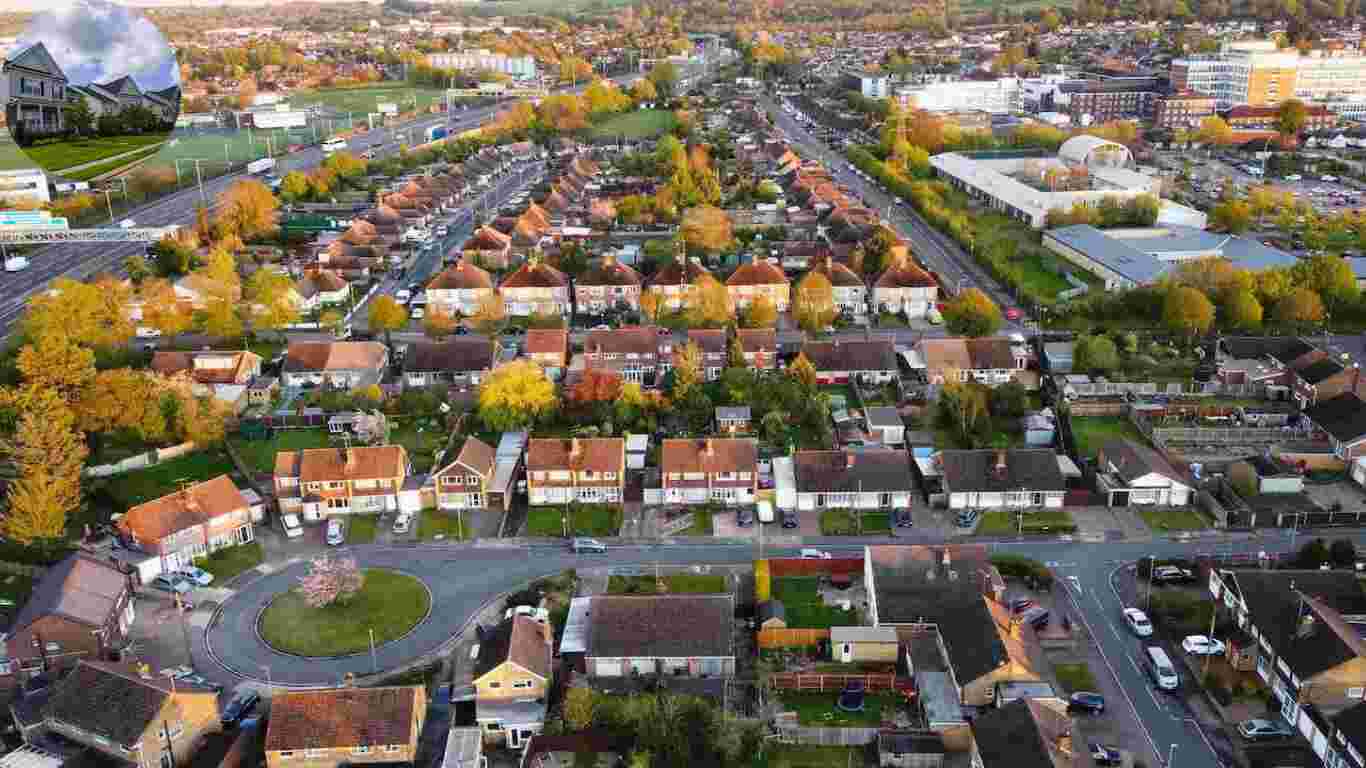When discussions about low-income housing arise, one question frequently dominates the conversation: “Does low-income housing increase crime in the suburbs?” This topic has long sparked debates fueled by anecdotal evidence, stereotypes, and fears. But what does the data say? Are these concerns valid, or do they stem from misconceptions?
| Study/Report | Key Findings | Context |
|---|---|---|
| Lens (2012-2014) | No observed relationship between housing vouchers and crime in suburbs. Controversies are “fueled by misinformation”. | Fixed-effects models across 215 cities and suburban counties (1997-2008). |
| Santiago et al. (2003) | Proximity to assisted housing showed no crime increase in Denver. | Examined scattered-site affordable housing developments. |
| Suresh & Vito (2007) | Crime hotspots emerged post-revitalization in Louisville, linked to housing density and poverty concentration. | Case-specific findings (not generalizable to suburbs). |
| LIHTC Studies | No crime increase; some evidence of crime reduction. | Focused on Low-Income Housing Tax Credit developments. |
| Carr (2020s) | Section 8 vouchers correlated with increased violent crime arrests among recipients. | Lottery-based study of individual-level impacts (not neighborhood-wide). |
| CHPC (2024) | Current research rejects crime increases, notes potential decreases. | Synthesis of multiple studies. |
The Myth: Why People Believe Affordable Housing Increases Crime
The question “Does low-income housing increase crime in suburbs?” persists because of the widespread myths and fears about affordable housing. Let’s break down the reasons behind these perceptions.
Suburban Fears and Historical Stereotypes
Historically, suburban communities have expressed resistance to low-income housing projects, often driven by NIMBYism (Not In My Backyard) attitudes. People worry that affordable housing will disrupt the “character” of their neighborhoods, lower property values, and bring crime.
These fears are often tied to stereotypes about poverty and crime. Many believe that lower-income individuals are inherently more likely to engage in criminal activities, a misconception that lacks evidence but persists due to societal biases.
The “Social Disorganization” Theory
One academic explanation for these fears is the “social disorganization” theory, developed by sociologists Shaw & McKay. This theory suggests that neighborhoods with high residential mobility, economic instability, and social diversity may experience weakened social bonds, leading to higher crime rates. While this theory has been influential, it often oversimplifies the relationship between poverty and crime, overlooking other critical factors like community investment and policing.
Media Influence
The media also plays a significant role in shaping public opinion. News outlets often sensationalize crime stories and disproportionately highlight incidents involving low-income neighborhoods or housing developments. Case studies of controversial affordable housing projects where crime did occur are frequently cited, creating the impression that such housing always leads to increased crime.
For example, headlines about crime spikes near specific public housing units may linger in public memory, even if later studies show no causal link. This selective reporting reinforces the myth that low-income housing equals more crime.
What the Research Shows
Contrary to popular belief, extensive research indicates that low-income housing does not inherently increase crime in suburban areas. Studies reveal a far more nuanced and often positive picture.
You may also read(does the bank hold the deed to my house)
City-Level Findings
- Housing Voucher Programs: Research indicates that housing voucher programs, which allow families to move to lower-poverty areas, show a weak or even negative correlation with violent crime. Families using vouchers often move to safer neighborhoods, benefiting from better schools and opportunities, which helps reduce crime over time.
- Public Housing Reforms: Programs designed to deconcentrate poverty, such as relocating families from high-poverty public housing to lower-poverty neighborhoods, have been associated with reductions in violent crime arrests. This suggests that crime rates can decline when families are given access to stable, safe housing.
Suburban-Specific Data
When we zoom in on suburban areas, the data becomes even more compelling:
- No Observed Relationship: Studies examining suburban neighborhoods with a substantial number of voucher households found no significant increase in crime rates. This challenges the assumption that low-income residents bring crime into more affluent areas.
- Orange County Case Study: In Orange County, California, affordable housing developments were linked to decreased crime rates and higher property values. These projects helped build stronger communities by stabilizing housing and boosting local economies.
- Low-Income Housing Tax Credit (LIHTC) Developments: LIHTC-funded projects, which create subsidized housing in underserved areas, have been associated with violent crime reductions in neighborhoods previously struggling with high crime rates.
A Broader Perspective
The evidence overwhelmingly shows that low-income housing does not inherently cause crime. Instead, crime is often connected to broader systemic issues like economic inequality, lack of social services, and inadequate community infrastructure—not the presence of affordable housing itself.
How Affordable Housing Can Reduce Crime
Far from being a driver of crime, low-income housing can help reduce crime rates when properly designed and implemented. Here’s how:
The Stabilization Effect
Affordable housing provides families with stable living conditions, reducing homelessness and housing insecurity—two factors that are strongly associated with crime. When people have a safe place to live, they are less likely to engage in risky behavior or be exposed to environments that foster crime.
Community Investment
Mixed-income housing developments often encourage community cohesion. By bringing together residents from diverse economic backgrounds, these projects promote informal surveillance—neighbors looking out for each other—and stronger social ties. This sense of community can deter criminal activity.
Economic Benefits
Affordable housing can lead to higher property values and increased funding for public services like schools and policing. This creates a positive feedback loop: as neighborhoods improve, crime decreases further.
Crime-Resistant Design
Modern affordable housing projects incorporate crime-resistant architectural features, such as better lighting, open spaces, and clear visibility. These design elements discourage criminal behavior and enhance safety for residents and their neighbors.
Addressing Counterarguments
Opponents of low-income housing often raise concerns about concentrated poverty and its potential to increase crime. Let’s address these arguments.
But Concentrated Poverty Increases Crime…”
Concentrated poverty can indeed lead to higher crime rates. However, modern housing policies explicitly aim to deconcentrate poverty, dispersing affordable housing units across multiple neighborhoods. This approach prevents the creation of high-poverty enclaves and promotes socioeconomic diversity.
Design and Maintenance Matter
Critics also argue that poorly designed public housing attracts crime. While this was a valid concern for older public housing projects, today’s affordable housing developments prioritize high-quality design and maintenance. Features like secure entrances, well-lit pathways, and community spaces help foster safety and reduce criminal activity.
Voucher Screening Processes
Another common concern is that subsidized housing might bring in tenants with criminal histories. However, most housing programs have strict screening criteria, including income verification and background checks. These measures ensure that tenants meet specific standards, alleviating concerns about potential crime.
Policy Recommendations for Safe Integration
To ensure that affordable housing is successfully integrated into suburban areas, policymakers and communities can adopt the following strategies:
Strategic Placement
Avoid clustering large numbers of low-income units in a single area. Instead, affordable housing should be distributed across neighborhoods to promote diversity and prevent concentrated poverty.
Community Partnerships
Foster collaboration between housing developers, local governments, and residents. Programs like neighborhood watch groups and community policing can strengthen trust and enhance safety.
Data Transparency
Create public dashboards to track and share crime rates near subsidized housing developments. Transparency helps debunk myths and provides evidence-based reassurances to concerned residents.
Conclusion
So, does low-income housing increase crime in the suburbs? The answer, based on extensive research, is a resounding no. Affordable housing does not inherently lead to higher crime rates. When implemented thoughtfully, it can stabilize communities, reduce crime, and improve the quality of life for everyone.
As we’ve seen, the myths surrounding low-income housing and crime are rooted in stereotypes and misinformation rather than facts. By embracing evidence-based policies and fostering collaboration, we can dispel these misconceptions and build stronger, safer communities for all.
You may also read(does umiami have sorority houses)
